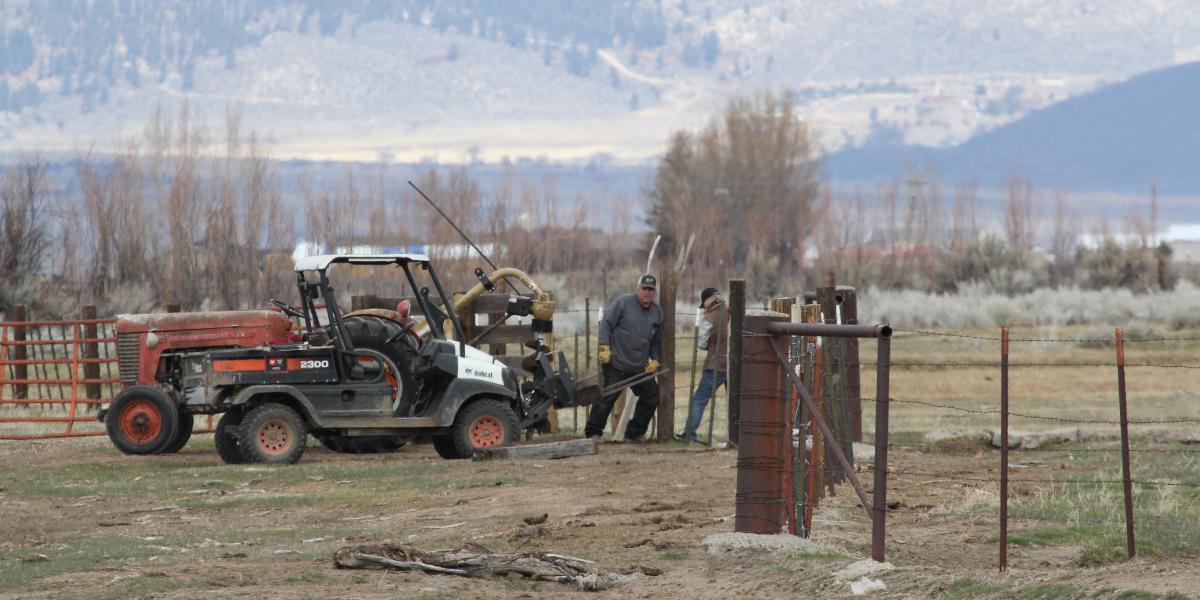Preparing for the Season Ahead
In the high desert and Sierra Nevada Mountains territory, autumn brings a unique set of challenges and fall chores for small ranchers and backyard farmers. The cooler weather and shorter days signal a time to shift focus from summer growth and harvest to preparing for the colder months. This transition is crucial for ensuring that our animals, crops, and equipment are ready to handle the arid climate and sometimes harsh winter conditions. Here’s what we’ll be up to in the coming months!
Preparing Pastures for Winter
- Rotating Grazing Areas: While the growing season is short in the high desert, rotating livestock to prevent overgrazing is still essential. The land here is sensitive, so allowing parts of the pasture to rest and recover through the winter helps maintain the health of our fields.
- Avoiding Overseeding: Overseeding may not be as practical in the arid high desert. Instead, we focus on managing existing forage and protecting the land from erosion. Using hardy native grasses and ground covers can help sustain the land without relying on traditional seeding methods.
- Mending Fences: Fall is a great time to check our fencing and make repairs before winter snow or heavy winds hit. Plus, it’s awful pretty this time of year, so riding fences is a beautiful task! Good fences are essential for keeping livestock safe, especially when winter conditions may limit our access to parts of our property.
Animal Care and Shelter Maintenance
- Winterizing Animal Shelters: Out here in the foothills of the Sierra Nevada and high desert, temperatures can drop dramatically at night. We look to make sure our barns, coops, and sheds are well-insulated and free of drafts, checking for leaks or weak spots that might let in wind or moisture, and mitigating critter attacks on our birds and babies.
- Stocking Up on Feed and Water: Grazing options can become limited in the fall and winter, so it’s critical to stockpile hay and other feed early. We had a pretty good year for hay, so we feel grateful and prepared. Additionally, since water sources in this region can freeze quickly, we’re looking to heat water troughs or stock de-icers to ensure our animals have access to fresh water.
- Monitoring Animal Health: The high desert and mountainous regions can be hard on livestock during the colder months. We conduct health checks on our animals, ensuring they’re in good condition going into winter. This might involve supplemental feed or shelter for animals sensitive to cold.
Garden and Crop Management
- Harvesting Fall Crops: Despite the shorter growing season, fall can still bring in crops like pumpkins, root vegetables, and hardy greens. We make sure to harvest before the first frost, which can come early in the Sierra Nevada.
- Avoiding Traditional Cover Crops: The dry, arid conditions in the high desert don’t always support traditional cover crops. Instead, we use mulch or ground covers to protect our soil from erosion and retain moisture through the winter. Planting drought-resistant or native plants in our garden beds can help enrich the soil naturally.
- Mulching: Mulching is especially critical for us in this arid climate. It helps retain moisture in the soil, protect roots from freezing, and reduce the impact of drying winds common in the high desert.
Equipment and Tool Maintenance
- Storing Farm Equipment: Fall is the time we clean, service, and store equipment like our tractors. The Sierra Nevada’s cold winters can be hard on machinery, so we ensure everything is well-maintained and stored under cover to protect it from snow and ice.
- Winterizing Irrigation Systems: With irrigation systems in high desert climates being essential for most crops, it’s important to winterize these systems before freezing temperatures. This includes draining hoses, shutting down drip irrigation, and storing equipment to avoid freeze damage.
Composting and Soil Care
- Turning Compost: In the high desert, where organic matter is often sparse, compost is invaluable. Fall is a great time to turn compost piles, adding in fall leaves, kitchen scraps, and garden trimmings to build up our compost for spring planting.
- Soil Testing and Amendments: Soil quality in the high desert can vary, so fall is a good time to test our soil and add necessary amendments. Whether it’s adding organic matter or adjusting pH levels, improving our soil over winter helps prepare for spring planting in our garden.
Preparing for Winter Weather
- Stockpiling Firewood: We love a good warm wood heat through the winter. We make sure our firewood is split and stacked in a dry, covered area. The high desert’s cold nights make a steady supply of firewood essential.
- Snow and Wind Preparation: Heavy snowfall and high winds are common here in the high desert, so we make sure our snow removal equipment—shovels, plows, and snow blowers—is in good working condition. Also, we double check to make sure our outdoor structures like sheds or greenhouses are secure to prevent damage from wind.
Animal Breeding and Planning for Next Season
- Breeding Programs: Fall is an ideal time to plan breeding schedules for livestock. While ours tend to do their own thing, we do try to make sure any young animals are born in spring when conditions are milder. Pneumonia is tough for our animals, so we make sure our breeding stock is healthy and well-fed as winter approaches.
- Ordering Seeds and Planning: With the limited growing season in the high desert, it’s important to plan early for next year’s garden. Order drought-resistant seeds and start mapping out your planting schedule to make the most of the upcoming season.
Completing these fall chores is crucial to maintaining a sustainable operation in the high. The Sierra’s unique climate challenges—ranging from early frosts to limited rainfall—mean that preparation is key. By taking the time to prepare our animals, crops, and equipment, we set ourselves up for a successful winter and a fruitful spring ahead!

